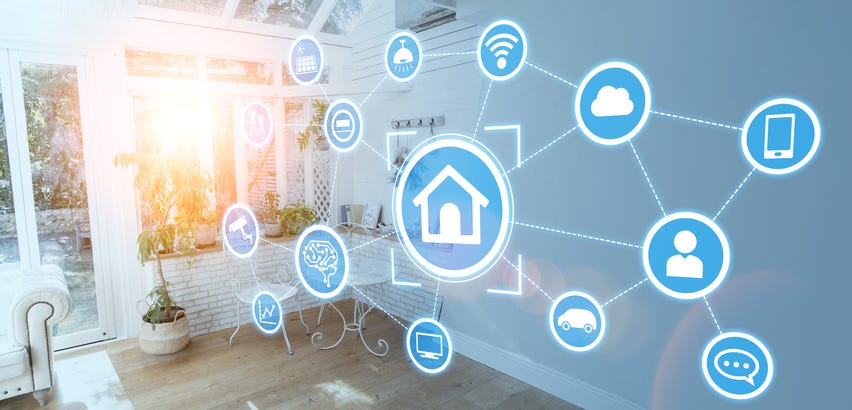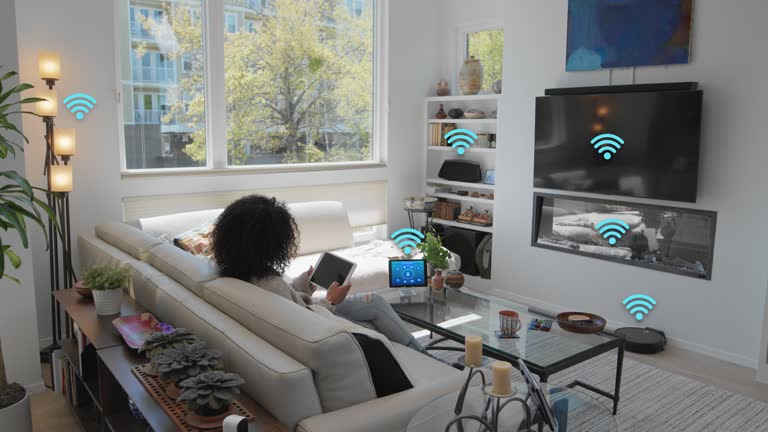
How to Build an Eco-Friendly Smart Home: A Tech Enthusiast's Guide
Share
As the world gravitates towards more sustainable living, the concept of an eco-friendly smart home has captivated tech professionals and enthusiasts alike. Merging the latest in technology with environmentally conscious practices not only reduces your carbon footprint but also enhances daily living through convenience and efficiency. This article will guide you through the process of building a sustainable smart home that aligns with your green values.

Understanding the Basics of Smart Home Technology
Before diving into the specifics of creating an eco-friendly smart home, it's essential to understand what smart home technology entails. Smart homes utilize internet-connected devices to enable remote management and monitoring of systems and appliances such as lighting, heating, and security. When these technologies are integrated with eco-friendly practices, the result is a harmonious blend of sustainability and innovation.
Choosing Sustainable Materials and Design
One of the first steps in building an eco-friendly smart home is selecting sustainable materials for construction and renovation. Opt for recycled, reclaimed, or renewable materials such as bamboo flooring, recycled glass countertops, and low-VOC paints to minimize environmental impact. In addition, consider designing your home to maximize natural light and ventilation, reducing the need for artificial lighting and air conditioning.
Integrating Smart Lighting Solutions
Lighting accounts for a significant portion of a homes energy consumption. By integrating smart lighting solutions, you can significantly reduce energy use. Smart bulbs and lighting systems allow you to control and automate your home's lighting remotely via a smartphone app or voice command, ensuring that lights are only used when needed. According to a recent article on Sustainable Smart Home Devices, these systems can cut energy consumption by up to 30%.
Energy-Efficient Appliances and Systems
Investing in energy-efficient appliances is another critical component of an eco-friendly smart home. Look for appliances with the ENERGY STAR label, which indicates that they meet or exceed federal energy efficiency standards. Smart thermostats, for example, learn your schedule and temperature preferences, adjusting accordingly to save energy. For more insights on reducing energy bills, check out this article on Home Automation to Reduce Electricity Bills.
Renewable Energy Integration
To further reduce your home's carbon footprint, consider integrating renewable energy sources such as solar panels or wind turbines. These technologies can significantly reduce reliance on non-renewable energy sources and lower utility bills. For more information on renewable energy trends, you can explore Trends in Renewable Energy Integration.
Smart Water Management
Water conservation is an often-overlooked aspect of sustainable living. Smart water management systems, such as leak detectors and automated irrigation systems, help minimize water waste. The Sustainable Living with Eco-Friendly Home Automation article provides further details on how these systems contribute to a greener lifestyle.
Connecting Your Smart Home Ecosystem
Building an eco-friendly smart home involves connecting various devices and systems to create a cohesive ecosystem. Use platforms like Apple HomeKit, Google Home, or Amazon Alexa to centralize control of your smart home devices. This connectivity allows for seamless communication between devices, enhancing efficiency and user experience.
Security and Privacy Concerns
While the benefits of smart home technology are numerous, it's vital to address security and privacy concerns. Ensure devices are updated regularly, use strong passwords, and consider investing in a robust home security system to protect against cyber threats.
Conclusion
Creating an eco-friendly smart home is a rewarding endeavor that combines technology with sustainable living. By selecting energy-efficient appliances, integrating renewable energy sources, and utilizing smart technologies, you can significantly reduce your environmental impact while enjoying the conveniences of modern living. For further reading on green technology, visit Everything You Need to Know About Green Technology.

FAQ
What is the most cost-effective way to start building an eco-friendly smart home?
Starting with smart lighting and thermostats can provide immediate energy savings and are relatively inexpensive compared to other smart home technologies.
Can smart home devices work with renewable energy systems?
Yes, many smart home devices are designed to integrate seamlessly with renewable energy systems, enhancing overall energy efficiency.
How do I ensure my smart home is secure?
Regularly update your devices, use strong passwords, and consider a comprehensive security system to safeguard your smart home against potential threats.
